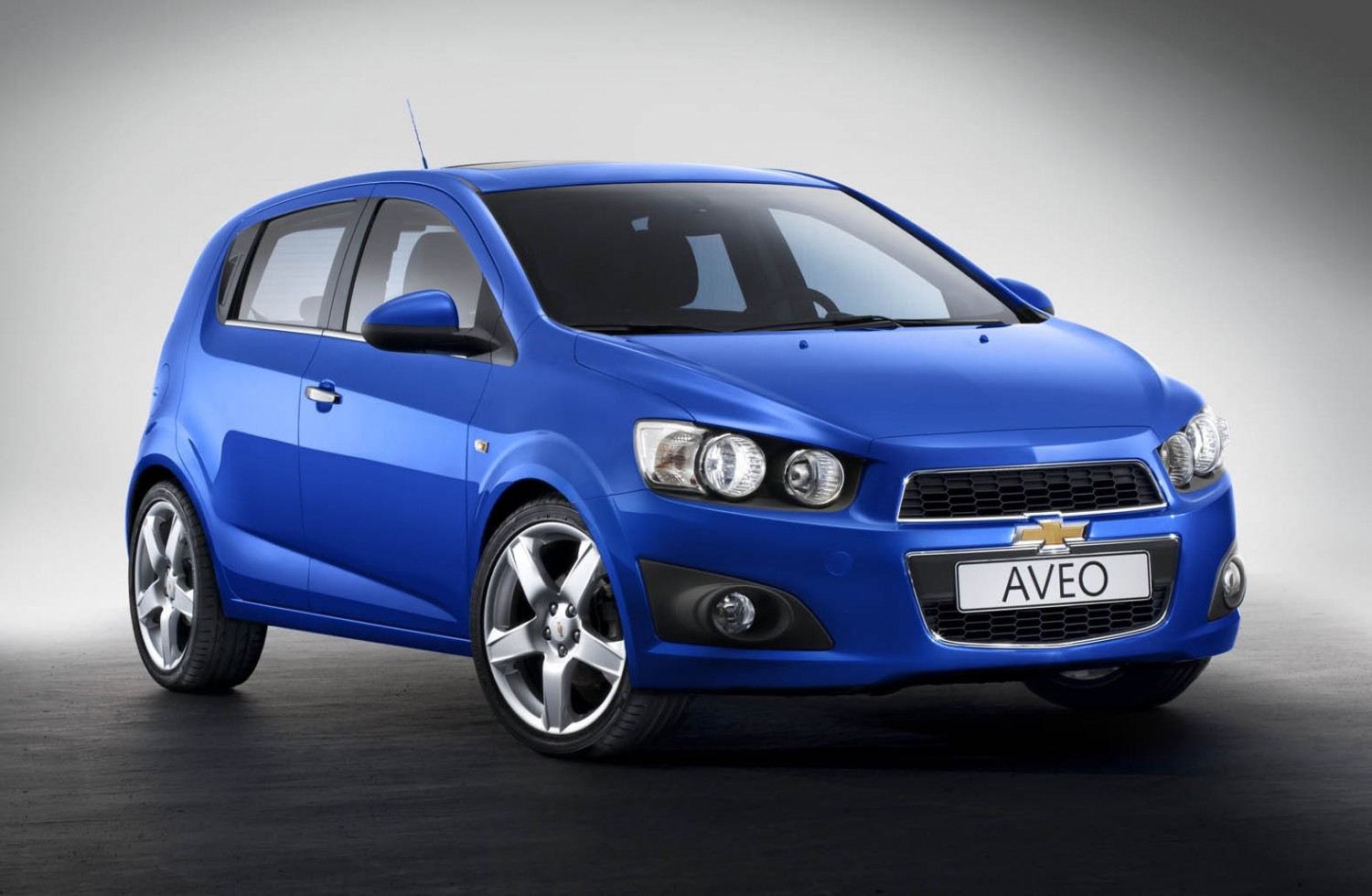Rust, it’s the slow, silent killer of cars, and it’s more than just a cosmetic issue. Left unchecked, it can eat through brake lines, compromise frames, and send a perfectly good engine to the scrapyard. While modern rustproofing has improved over the years, some automakers still skimp on long-term corrosion resistance.
For American drivers, especially those in snowy states or near the coast, rust is a real concern. That’s why we’ve broken down five vehicles that are built like fortresses against corrosion — and five that crumble far too early.
5 Cars That Avoid Rust for 15+ Years
These are the long-haul legends, cars that hold their own for over a decade in salt-heavy states like Ohio, Michigan, and New York. Whether it’s through smart engineering, aluminum panels, or simply better drainage and coatings, these vehicles have proven to shrug off rust even after 15 years.
Toyota 4Runner (2009–Present)
The Toyota 4Runner is the poster child for off-road durability, and part of that toughness comes from how well it resists rust. Built with a body-on-frame design and heavily coated underneath, the 4Runner handles winter roads and coastal air with ease.
Post-2009 models especially show strong resistance to corrosion, thanks in part to Toyota addressing the infamous rust issues from earlier generations. Owners consistently report clean frames at well over 200,000 miles, especially when they stay on top of basic maintenance like underbody washes.
When Toyota first rolled out the 4Runner back in 1984, the term “SUV” hadn’t yet entered everyday conversation. Fast forward more than twenty years, and the sport-utility vehicle has become a staple of the American automotive scene, constantly evolving, yet deeply ingrained.
Originally, SUVs were purpose-built machines engineered to conquer rough terrain and navigate steep, unforgiving trails.
Today, the SUV segment spans an entire spectrum, encompassing everything from plush luxury cruisers to car-based crossovers and compact utility vehicles. Simply put, there’s an SUV for just about every lifestyle.
The 2009 Toyota 4Runner continues to be offered in multiple trims that balance functionality with a touch of luxury. However, at its core, it hasn’t lost the rugged essence that defined its early days.
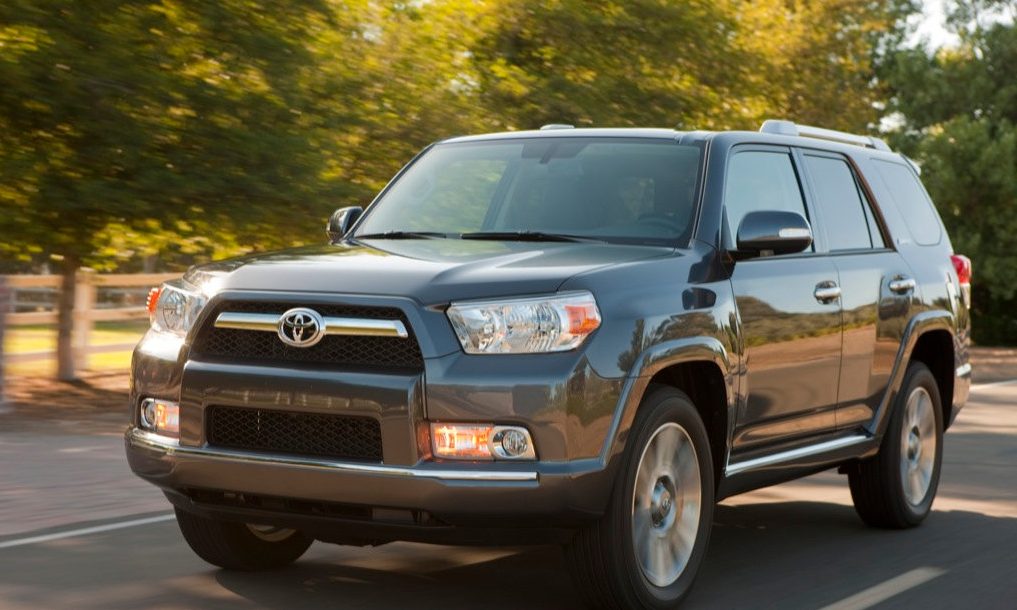
As the excerpt states, the 4Runner “was, after all, originally designed to bully mountain paths,” and the latest model maintains that DNA. Built on a robust body-on-frame truck platform, the 4Runner is equipped to handle tough off-road conditions with ease
. At the same time, Toyota has refined its handling to make it civil and approachable for daily driving, whether you’re navigating city streets or cruising the interstate.
Under the hood, the 2009 Toyota 4Runner gives buyers a choice between two capable engines: a standard 4.0-liter V6 or an optional 4.7-liter V8. Both powertrains can be paired with either rear-wheel or four-wheel drive.
The V6 generates 236 horsepower and 266 lb-ft of torque, while the V8 ups the ante to 260 horsepower and 306 lb-ft of torque. A five-speed automatic transmission is standard across all variants.
For those planning to tow, the V6 model can pull up to 5,000 pounds when properly equipped. The V8 version, when equipped with rear-wheel drive, can handle up to 7,300 pounds; the four-wheel-drive V8 tops out at 7,000 pounds.
As for fuel economy, the Environmental Protection Agency (EPA) rates the rear-wheel-drive V6 at 16 mpg in the city, 21 mpg on the highway, and 18 mpg combined.
The V8 sees a slight dip, delivering 15 mpg city, 19 mpg highway, and 17 mpg combined. Four-wheel-drive models trail these figures just slightly, but not enough to make a drastic difference in fuel costs for most drivers.
Honda CR-V (2013–2021)
Honda made a big leap in rust protection with the fourth and fifth generations of the CR-V. These models feature improved unibody construction with better weld sealing and drainage, as well as upgraded undercoating.
Thanks to smart design and fewer places for moisture to collect, the CR-V stands up well to salty roads. If you live in the Northeast or Midwest, this is one of the most rust-resilient compact SUVs you can buy.
Still, it’s important to acknowledge that the 2014 Honda CR-V isn’t exactly a heart-pounding choice. The vehicle lacks visual flair, and in some opinions, even crosses into unattractive territory.
As the excerpt plainly puts it, “its exterior styling is bland (bordering on ugly for some people),” and the same critique extends to its interior, where the cabin materials don’t quite match the quality of what you’ll find in some competing models.
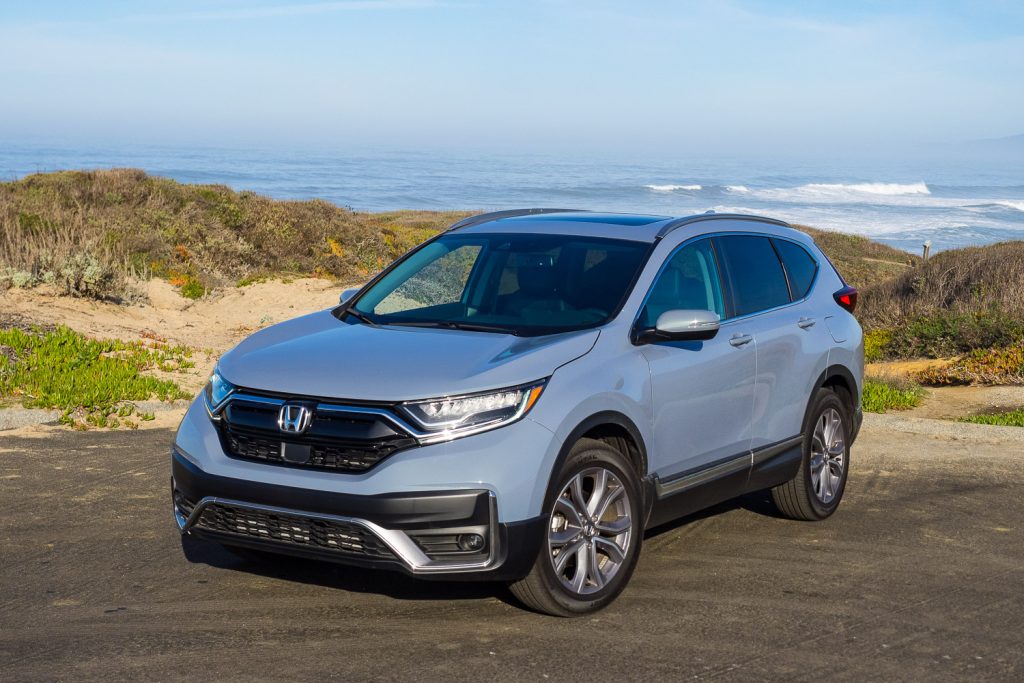
Performance-wise, the CR-V’s sole engine offering is competent but far from thrilling, “an efficient but humbly powered four-cylinder that will leave shoppers in search of more guts heading to a different SUV.”
That said, if your top priorities are sensibility and practicality, the 2014 Honda CR-V is tough to beat. As the original statement emphasizes, “when it comes to picking the sensible, practical choice, nothing comes remotely close to the 2014 Honda CR-V.”
Powering every 2014 Honda CR-V is a 2.4-liter four-cylinder engine that delivers 185 horsepower and 163 pound-feet of torque. All trims come equipped with a five-speed automatic transmission. Buyers can choose between front-wheel drive and all-wheel drive, regardless of trim.
As for fuel economy, the Environmental Protection Agency estimates that the front-wheel-drive CR-V returns 26 mpg combined (23 mpg city/31 mpg highway).
Mazda CX-5 (2017–Present)
Mazda learned its lesson the hard way with rust-prone models in the early 2000s. By the time the second-gen CX-5 rolled out in 2017, the company had overhauled its corrosion protection.
The CX-5 uses galvanized steel, wax-based undercoating, and tight body panel fitment to eliminate most moisture traps. A vehicle that stays clean and rust-free for years, even when driven through snowy winters and soaked spring seasons.
For the 2019 model year, Mazda expands the CX-5 lineup by introducing two new high-end trims: Grand Touring Reserve and Signature. Both of these trims come packed with an extended list of upscale features and amenities, and they also mark the debut of a powerful new turbocharged 2.5-liter four-cylinder engine as standard equipment.
Borrowed from Mazda’s larger CX-9, this engine delivers an impressive output of up to 250 horsepower and a robust 310 pound-feet of torque.
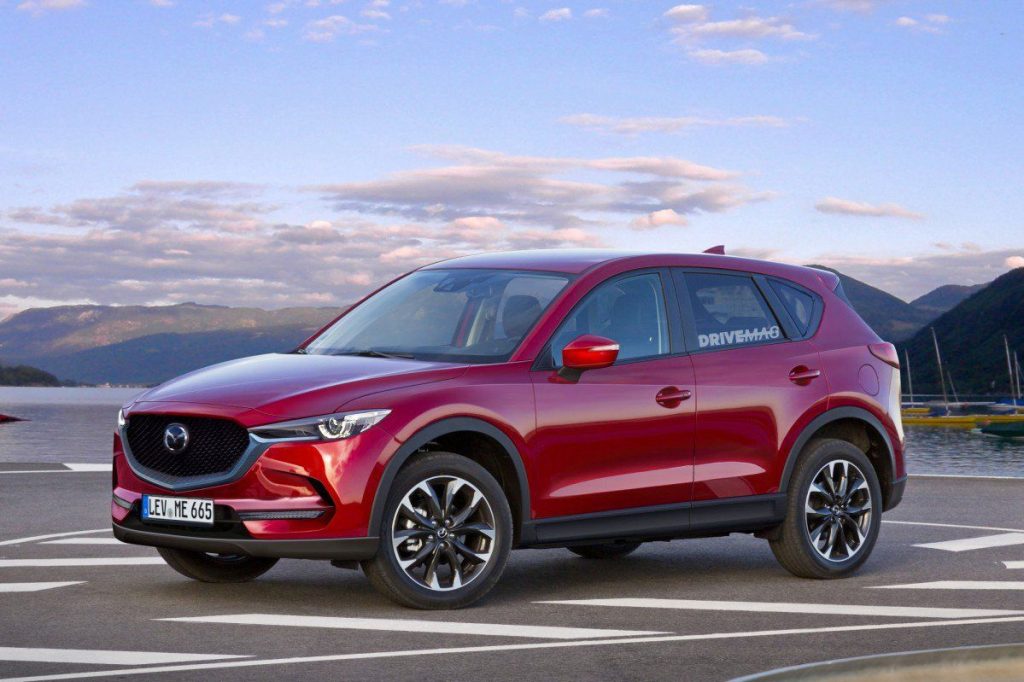
This new turbocharged engine directly tackles one of the most persistent criticisms the CX-5 has faced over the years, its underwhelming performance when equipped with the standard four-cylinder engine.
In addition, Mazda plans to introduce a 2.2-liter diesel engine option for the Signature trim later in the model year. This diesel version is expected to enhance both towing capacity and fuel efficiency. That said, these more powerful engines are exclusive to the CX-5’s uppermost trims, meaning they come at a premium.
Regardless of which trim you opt for, one ongoing drawback remains: the CX-5 offers less passenger and cargo space compared to several of its direct competitors.
Even so, the vehicle still manages to shine in the crowded compact SUV segment. The CX-5 strikes a compelling balance between engaging driving dynamics, everyday comfort, and practical utility.
Its cabin materials and design give off an upscale vibe that feels more refined than what you’d typically find in this class. As the excerpt confidently concludes, “it’s a smart choice.”
Subaru Outback (2015–Present)
Once notorious for frame and rocker panel rust, Subaru turned things around with the newer Outback. From 2015 onward, models come with improved weld sealants, thicker undercoating, and smarter body design that reduces salt exposure to vulnerable parts.
Subaru’s AWD system also plays a role, its balanced power distribution leads to less wheel spin, which means less salt being kicked up into the undercarriage. In cold, wet climates, this wagon-SUV hybrid really holds up.
The Outback’s base engine, a 2.5-liter flat-four, delivers solid efficiency for a vehicle of its size, earning an EPA-estimated 28 mpg combined. This makes it a practical choice for those looking to balance fuel economy with everyday utility.
Along with this efficiency, the Outback also comes equipped with a refined all-wheel-drive system, as well as hill hold and hill descent control, features that enhance its off-road capability and allow for confident driving when venturing off the pavement.
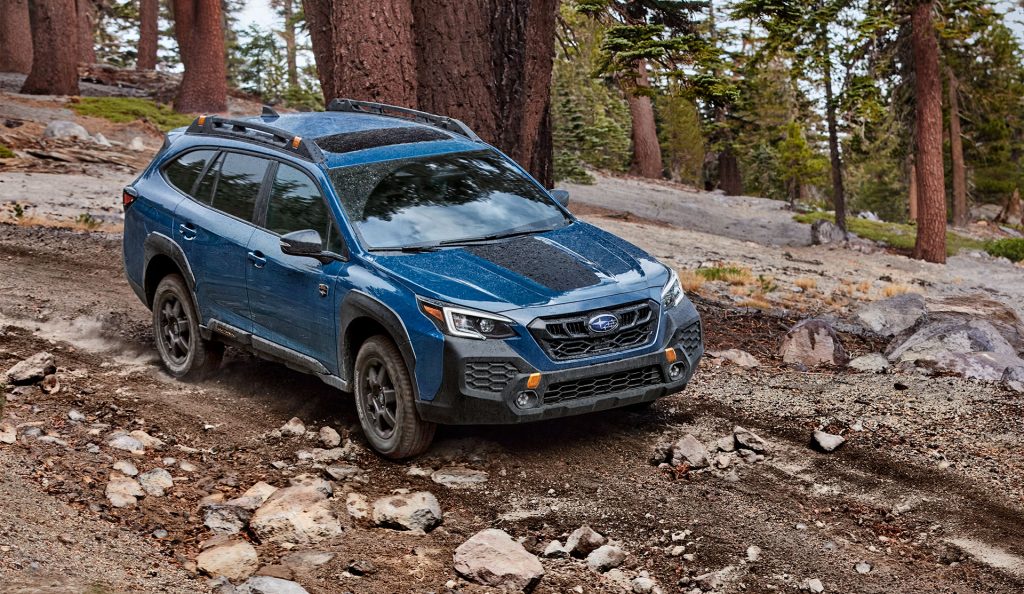
In terms of cargo space and utility, the Outback is ready for adventure. With 73.3 cubic feet of available interior cargo volume, 60/40-split fold-down rear seats, and standard roof rails, it’s easy to haul all your gear and outdoor essentials.
The 2018 model also embraces modern tech updates: “Every 2018 Outback now comes with Android Auto and Apple CarPlay as part of its updated touchscreen display.”
That said, the Outback isn’t without its shortcomings. The primary drawback lies in its performance. While the four-cylinder engine does deliver commendable fuel economy, it’s not particularly powerful by segment standards.
Subaru does offer a six-cylinder engine for those seeking more grunt, but even then, driving dynamics aren’t the Outback’s strong suit. It’s not a vehicle that inspires spirited handling — “the Outback is also not particularly crisp or willing to drive with enthusiasm around turns.”
Also Read: Top 10 Most Reliable Used Cars You Can Buy for Under $10,000 in 2025
Still, this trade-off is one many buyers will gladly make. If you’re searching for a crossover SUV that delivers reliability, everyday versatility, and off-the-beaten-path readiness, the Outback deserves serious consideration. As the conclusion wisely notes, “it’s a compromise we wholeheartedly accept… give the Outback a look.”
Tesla Model 3/ Model Y (2017–Present)
Although Tesla has had its fair share of early paint quality issues, the Model 3 and Model Y shine when it comes to rust resistance. The key is their use of aluminum body panels, which don’t rust like steel. While aluminum oxidizes, it forms a hard, protective surface instead of flaking off.
Tesla’s newer builds (post-2021) also feature better panel alignment and thicker paint application. With fewer moving undercarriage parts and sealed battery housings, there’s less opportunity for rust to form, a smart design win, especially for EV drivers in wintery regions.
Tesla has officially removed the Standard Range model from the Model 3 lineup, which previously served as the most affordable option in the series. The 2025 Tesla Model 3 starts at $44,130 and can reach up to $56,630, depending on the trim level and selected options.
Rear-wheel drive with a single electric motor comes standard, but buyers can opt for a dual-motor all-wheel-drive configuration. For most drivers, we recommend choosing either the rear-wheel-drive or all-wheel-drive Long Range versions.
These offer impressive estimated ranges of 363 miles and 346 miles per charge, respectively. Regardless of trim, every Model 3 includes heated and ventilated front seats, an onboard navigation system, and Tesla’s Autopilot driver-assist suite.
Like most electric vehicles, the Tesla Model 3 accelerates with smooth, immediate force, delivering swift, nearly silent performance. From a complete stop, the motor delivers a jolt of energy that makes even the base trims feel quick. Some versions are flat-out fast.
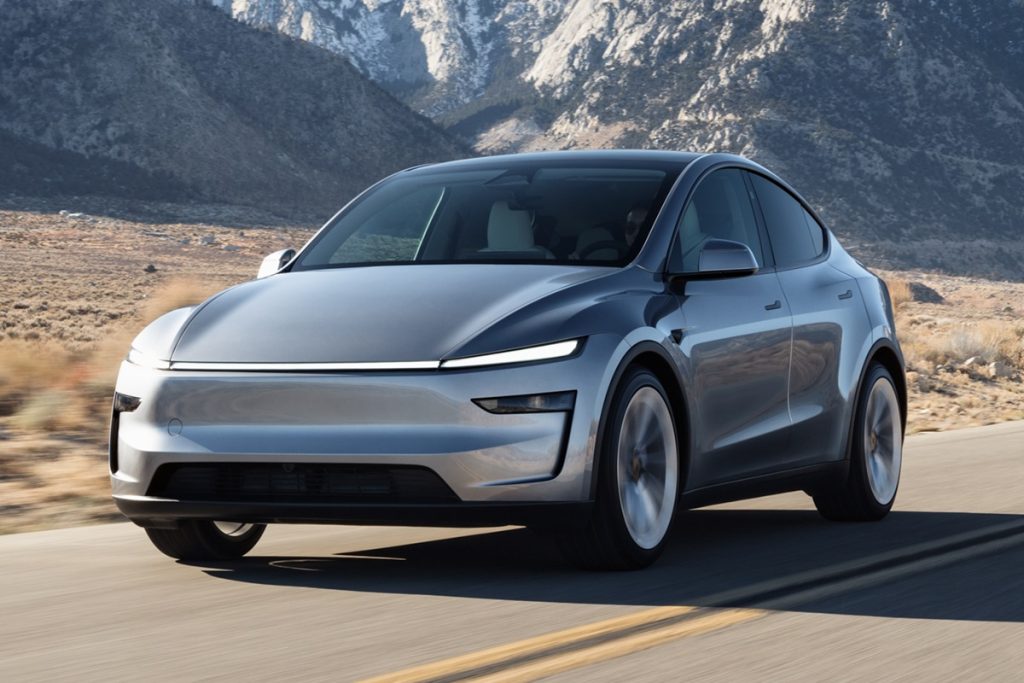
As is typical with EVs—and Teslas in particular—the Model 3’s battery is mounted low in the chassis beneath the floor. This design gives it a low center of gravity, resulting in agile handling and a confident, planted feel in corners.
The steering system is precise and well-calibrated, with three customizable settings for steering effort. Ride quality is firm but not jarring, and Tesla has made notable improvements to cabin insulation; during our testing, the interior was significantly quieter than previous versions.
The newly introduced Performance trim for 2024 raises the stakes with a suite of performance enhancements. This is the only Model 3 equipped with a sport-tuned suspension that features adaptive dampers.
It also benefits from an all-wheel-drive powertrain delivering a combined 510 horsepower. Tesla has further reinforced the Performance model with upgraded brakes and a staggered wheel and tire setup to match its athletic capability.
5 Cars That Rust Too Soon (Buyer Beware)
Now for the bad news. These vehicles, while often affordable and popular, have gained reputations for rusting earlier than expected, sometimes catastrophically.
Whether it’s due to poor undercoating, bad panel design, or just cheap materials, they’re not ideal choices if you want a long-term, low-maintenance ride in a rust-prone climate.
Ford Escape (2008–2012)
This generation of the Ford Escape is infamous for premature rust, especially around the rear wheel wells and tailgate. Poor drainage and minimal rust protection in key structural areas mean corrosion sets in early — often within 5 to 7 years in snowbelt states.
Subframe rust is also a common complaint, leading to expensive or even unrepairable damage. If you’re considering one of these as a budget SUV, be extra cautious — and make sure to thoroughly inspect the underside.
Since its launch seven years ago, the Ford Escape has proven to be a strong performer for the brand, consistently ranking among the best-selling compact SUVs in the U.S.
For the 2008 model year, Ford has given the Escape what could be described as a “top-half” redesign, the exterior and interior have undergone a complete refresh, while the mechanical underpinnings have remained largely the same.
When it first hit the market, the Escape was considered a case of getting it right from the outset. Ford’s compact, car-based SUV impressed early with its spaciousness for four passengers, lively driving dynamics, partly thanks to chassis development shared with Mazda, and a zippy V6 engine.
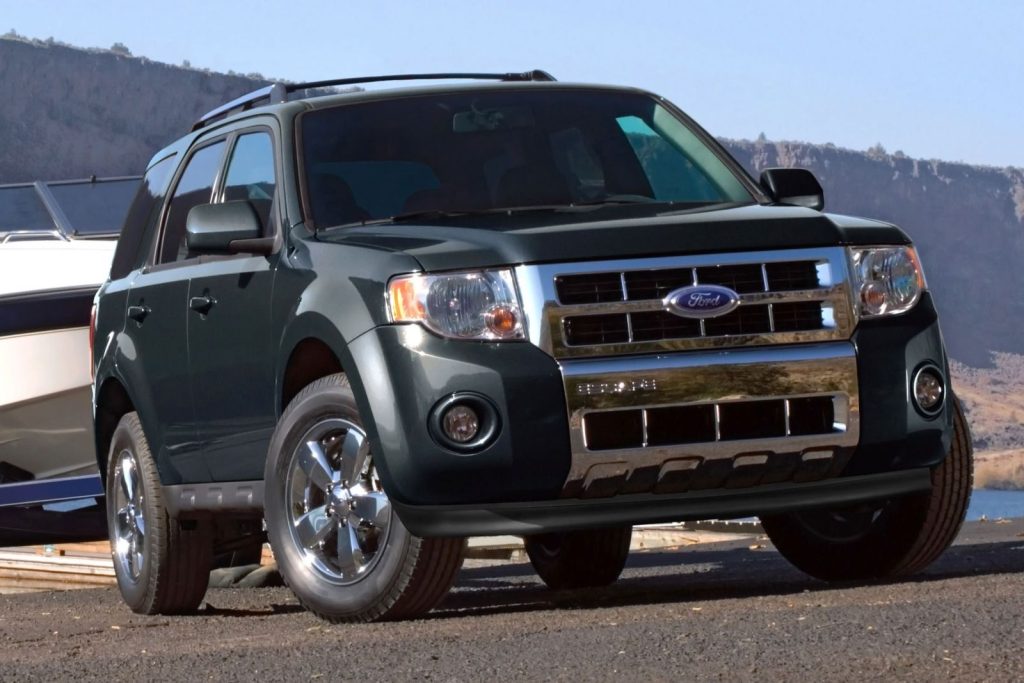
Recognizing this early success and constrained by its ongoing financial struggles, Ford appears to have bet on a more rugged exterior design and a more refined interior to keep the Escape relevant in a crowded segment.
The new styling certainly lends the Escape a more assertive presence. With a bolder grille, a higher beltline, a raised hood, and headlights inspired by the Ford Edge, the 2008 Escape carries a more SUV-like persona.
Inside, Ford introduced a range of practical updates, including the industry’s first use of recycled materials for seat upholstery, a multifunction display positioned at the top center of the dashboard, and vibrant blue backlighting for the gauges.
Efforts to quiet the cabin were also made, with the addition of acoustic-laminated glass in the windshield and significantly thicker carpeting to absorb road noise.
Despite these visual and comfort upgrades, the 2008 Escape reveals some shortcomings when compared to more up-to-date rivals. Most competitors have moved on to five- or six-speed automatics that do a better job optimizing engine performance while delivering better mileage.
Chevrolet Aveo (2005–2011)
The Aveo was marketed as a cheap, efficient commuter car, and unfortunately, its build quality reflects that. Manufactured in South Korea with little attention to corrosion resistance, these cars rust out fast — especially in the rocker panels and undercarriage.
It’s common to see structural holes develop well under 100,000 miles. In snowy states, these cars often fail inspection before they fail mechanically. If you’re offered one for a deal, know that you may be buying a rusted-out headache.
At first glance, the 2010 Chevrolet Aveo might seem like a strong contender in the economy car segment. With its ultra-low price point, making it one of the most affordable new vehicles on the market, paired with reasonable fuel economy and decent driving dynamics, the Aveo could easily catch the attention of budget-conscious buyers.
However, once prospective shoppers take a closer look and start comparing it to rival offerings, the Aveo’s appeal begins to wane. As it turns out, it performs more like a straggler than a frontrunner in this competitive category.
To be fair, the Aveo does include some features aimed at attracting younger drivers. Items like an MP3-compatible sound system, faux carbon-fiber interior accents, and a range of bold exterior color options provide a small dose of flair.
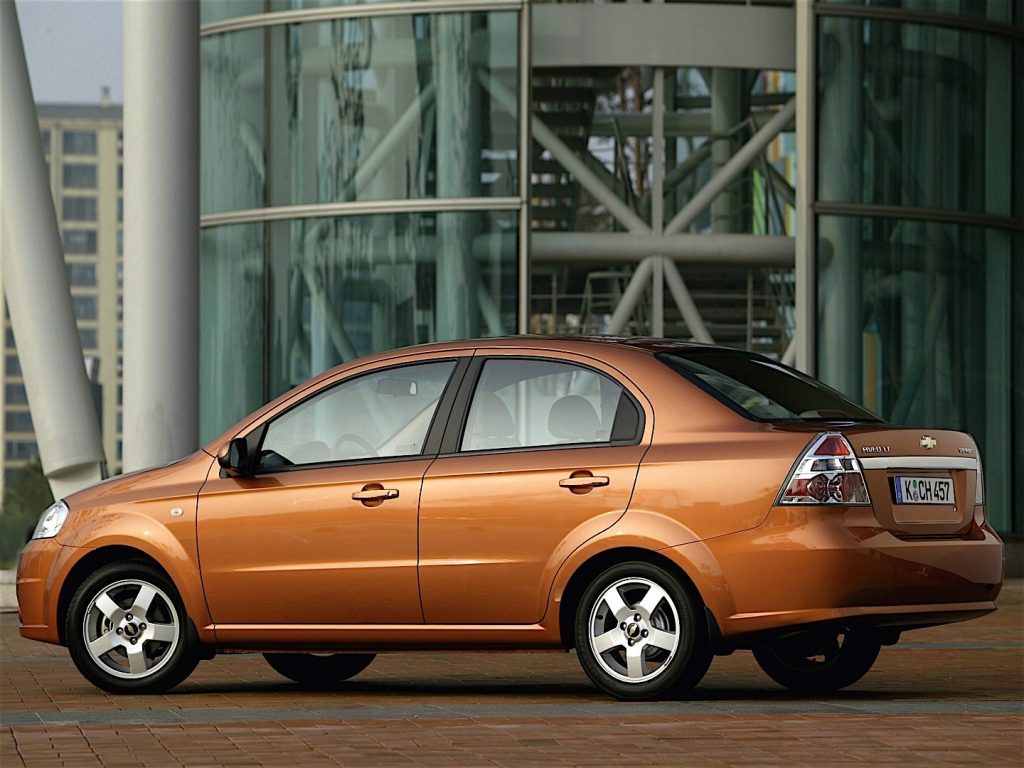
Additionally, the inclusion of GM’s OnStar system is a notable benefit for a car in this price range. Still, these enhancements do little to offset the car’s uninspired styling and average performance.
Even the updates for the 2010 model year fall short of making a meaningful impact. In fact, the revised manual transmission which now uses taller gear ratios, might actually hinder performance further in the name of squeezing out slightly better fuel efficiency.
It’s important to temper expectations when evaluating entry-level, budget-focused cars, but even within that context, the 2010 Chevrolet Aveo fails to measure up in several key areas.
Compared to competitors like the Honda Fit, Kia Rio, and Toyota Yaris, the Aveo delivers a less engaging driving experience and suffers from a noticeably low-rent interior.
Given these shortcomings, potential buyers might want to explore other options. In fact, “we would even suggest considering used versions of the previously mentioned cars, especially the class-leading Fit,” before committing to an Aveo.
Nissan Altima (2007–2012)
These Altimas have two major rust issues: front strut tower rot and undercarriage corrosion. The strut tower problem is especially dangerous — rust can spread to the point where it affects steering and suspension.
Nissan didn’t apply sufficient rustproofing in key structural areas, and paint adhesion is also weak, which allows moisture to get under the surface. For many buyers in the Northeast, these Altimas were fine when new, but they became money pits after 7 or 8 winters.
Although both the midsize Altima sedan and its coupe counterpart are undeniably stylish vehicles, their visual appeal is just one facet of what makes them attractive.
Take the V6-powered 3.5 SR model, for instance, it not only delivers a potent 270-horsepower V6 engine but also features a sport-tuned suspension that brings an upscale sport sedan-like driving feel.
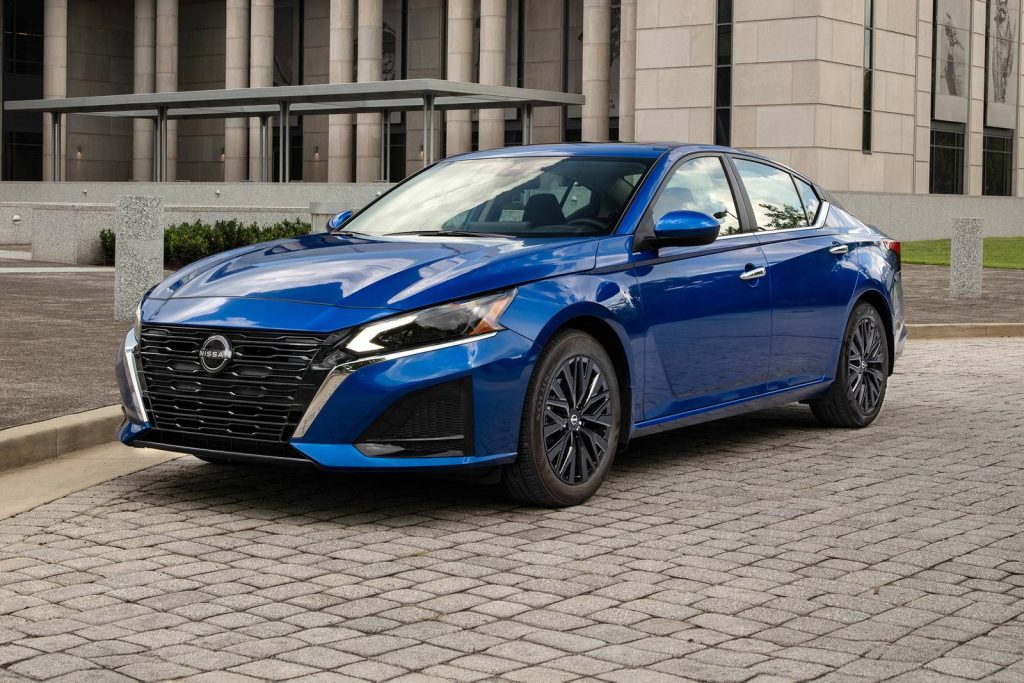
Even in the absence of these performance-oriented enhancements, the more basic 2.5 and mid-tier 2.5 S trims provide a surprisingly engaging driving experience for cars built with practicality in mind.
Step inside, and you’ll find the Altima boasts a well-designed and comfortable interior. Buyers have the option to equip the cabin with a range of premium features, such as a hard-drive-based navigation system with built-in music storage, Bluetooth streaming audio, and a rearview camera.
In many cases, “some buyers will be forced to shell out money for features they don’t really want in order to get those they do.” Another minor downside is that headroom in the back seat is somewhat restricted in both sedan and coupe variants.
Despite these few shortcomings, the Altima remains a strong contender in the competitive midsize car market — even as newer rivals emerge. For shoppers wanting to explore comparable models, there are several excellent options to consider.
Dodge Caravan/ Chrysler Town & Country (2001–2010)
These minivans were family favorites for years, but they’re nightmares when it comes to rust. Sliding door rails and rocker panels are common weak spots, and many owners report rust-through in structural areas.
Drainage is poor, and the large underbody is prone to salt buildup. If you’ve ever tried to open a van door and found the track completely rusted, you know the frustration. Avoid these if you live in any state that salts roads.
In 2016, the Chrysler Town & Country continues to deliver a generous list of standard features—many of which typically cost extra in rival minivans. Right out of the gate, it includes leather-trimmed seats, power-sliding side doors, a power liftgate, and a touchscreen interface complete with a rearview camera.
For those stepping up to the higher trims, additional premium amenities become available, such as xenon headlights, an upgraded audio system, and a Blu-ray rear-seat entertainment setup.
A standout feature exclusive to the Town & Country and its Dodge counterpart is the second-row “Stow ‘n Go” seating system, which allows the seats to fold flat into the floor, creating a smooth cargo area behind the front seats.
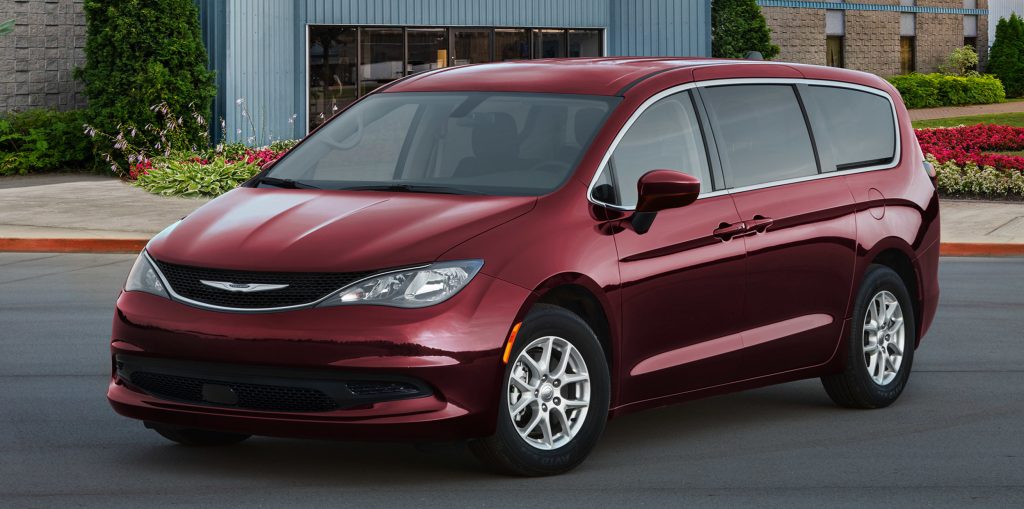
However, since the Town & Country’s last full redesign in 2008, competition from Japanese automakers has grown considerably stronger. The Honda Odyssey continues to stand as one of the segment’s top-tier options, thanks to its cleverly adaptable seating configurations, confident handling, and refined ride.
The Toyota Sienna, another class leader, offers a similarly premium experience and is notably the only minivan in its class available with all-wheel drive—an advantage for buyers living in regions prone to snow and ice.
Even so, “the 2016 Town & Country is a worthy pick,” especially for buyers looking for a stylish, well-equipped seven-passenger minivan that can quickly convert into a practical cargo hauler.
Under the hood, all 2016 Chrysler Town & Country models are equipped with a 3.6-liter V6 engine, delivering 283 horsepower and 260 pound-feet of torque.
This power is routed to the front wheels via a six-speed automatic transmission. While performance is respectable, fuel efficiency is somewhat below average for the class. According to EPA estimates, the Town & Country achieves 20 mpg in combined driving (17 mpg city and 25 mpg highway).
Also Read: 5 Cars Rated Best for First-Time Buyers and 5 Giving New Drivers Fits
Hyundai Elantra (2006–2012)
Hyundai has come a long way, but this generation of the Elantra is a relic from the bad old days. Rear quarter panel rust, subframe corrosion, and weak paint make it a poor choice for long-term ownership in salty regions.
Some owners reported visible rust bubbling after just a few winters. Later Elantras (2013 and beyond) are significantly better, but the earlier ones are best avoided unless they’ve spent their whole lives in Arizona or Nevada.
Even if your car isn’t one of the rust-resistant champs, you’re not powerless. Start with regular undercarriage washes, especially after snowstorms.
The Elantra’s 2.0-liter four-cylinder engine is based on an older design and doesn’t offer the same level of refinement found in some Japanese rivals. However, it delivers a surprisingly responsive performance and commendable fuel efficiency.
In addition to being efficient, the engine is environmentally friendly: it qualifies as an Ultra-Low-Emissions Vehicle (ULEV) across most of the country, and as a Partial-Zero-Emissions Vehicle (PZEV) in states like California, Oregon, and others in the Northeast.
Once on the road, the 2008 Hyundai Elantra continues to leave a favorable impression. Steering and handling are respectable, the ride is smooth, and the car remains composed even at higher speeds.
It frequently comes across as more sophisticated than its budget-friendly image would suggest, a perception reinforced by a stylish and well-assembled interior.
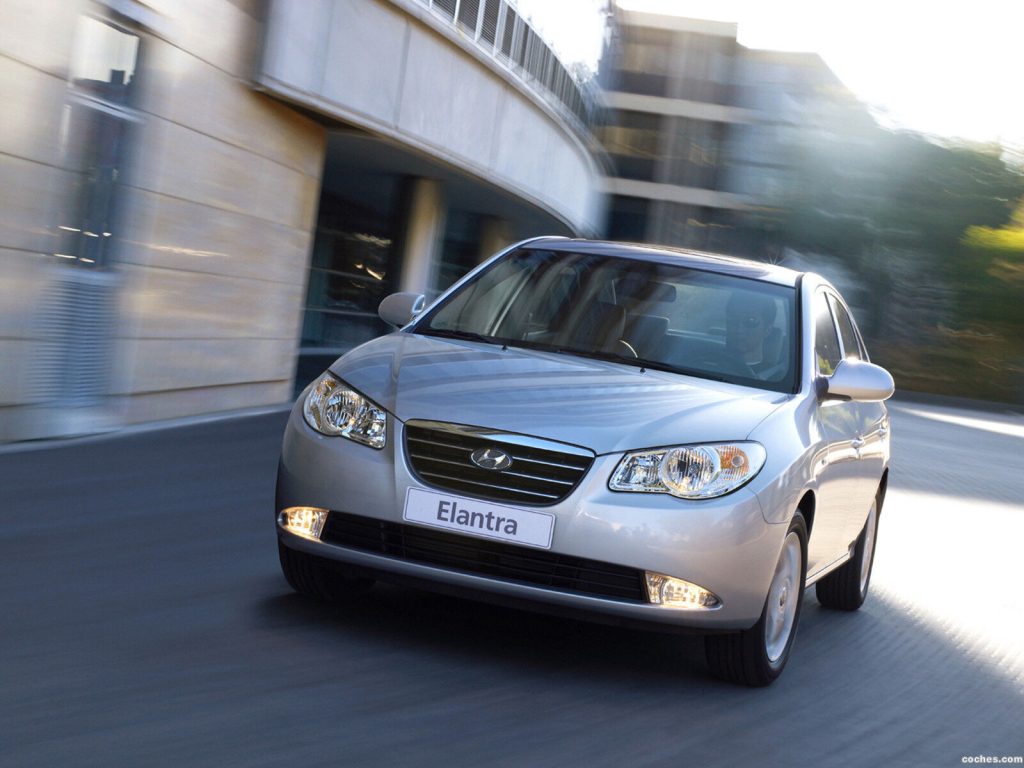
Materials used throughout the cabin are generally high in quality, including the plastics, though some cheaper trim elements do stand out. The leather-wrapped steering wheel, exclusive to the SE trim, can also feel slightly clammy to the touch, which detracts a bit from the otherwise premium feel.
As usual in the compact economy segment, there’s no shortage of options. Better-known nameplates like the Civic may dominate the conversation, but the 2008 Elantra holds its own, matching—and in some cases exceeding—its competitors in several key areas.
One of its strongest assets is the exceptional combination of standard features, interior space, and solid construction it offers at a notably low price point. Naturally, a round of test drives is the best way to determine the right fit, but when you eventually make your way to a Hyundai dealership, “prepare to be pleasantly surprised.”
The Elantra sends power to the front wheels via a 2.0-liter inline-four engine that produces 138 horsepower and 136 pound-feet of torque. Buyers can choose between a five-speed manual transmission or a four-speed automatic across all trims.
In states that adhere to California emissions standards, automatic-equipped Elantras earn a Partial-Zero-Emissions Vehicle (PZEV) certification and are rated at 132 horsepower. Regardless of the configuration or region, the 2008 Elantra achieves a solid fuel economy rating of 24 mpg in the city and 33 mpg on the highway.
Consider getting an oil-based undercoating like Fluid Film or Krown every fall — they creep into cracks and repel moisture.
Keep your door and rocker panel drains clear, touch up any stone chips before winter, and avoid parking in heated garages with a wet, salty vehicle. A little prevention each year can easily buy you 5 to 10 extra rust-free years.
Rust doesn’t care how much horsepower your car has or how good the MPG is — it starts quietly, eats aggressively, and doesn’t stop.
Choosing a rust-resistant car is one of the smartest moves you can make, especially if you live in a northern or coastal state. If you’re in the market for a long-term daily driver, go for vehicles like the Toyota 4Runner or Honda CR-V that are built to last.
Steer clear of older Escapes, Altimas, or Caravans unless you’re ready to throw money at bodywork or junkyard replacements. And no matter what you drive, remember: rustproofing isn’t a scam — it’s insurance for your frame.

